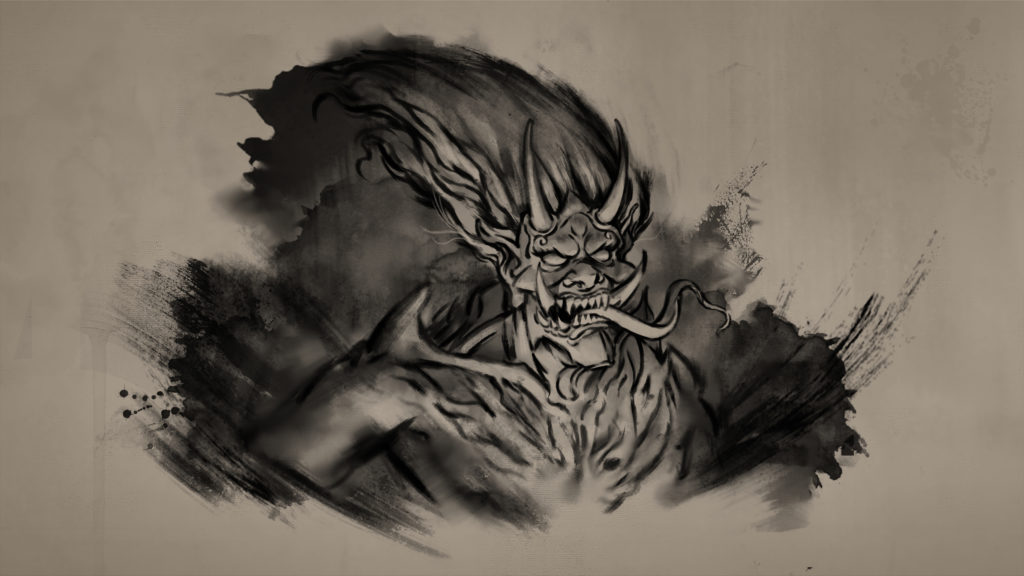
An oni is a type of yokai, supernatural creatures, monsters, and spirits, found in Japanese mythology. While many other entities that fall under the yokai umbrella can be benevolent, oni are almost always malicious and violent. Typical folkloric depictions show oni as having horns, red or blue skin, sharp claws, and wearing tiger skins. They can range from small to giant in size. In some stories, oni were also said to be able to shapeshift, making them difficult to locate and battle.
These creatures were known to be violent, powerful, and cruel, so many western translators have compared them to ogres and trolls. There are many tales of oni throughout Japanese history, but they are almost universally seen as evil spirits who are usually associated with death, destruction, and misfortune.
In Japanese Buddhism, oni are considered part of one of the six orders of life in the cycle of birth, death, and rebirth. If a person performed many dark misdeeds, they could transform into an oni before or after death. Shinto myths explain that this happens when a part of a mortal soul, known as ara-mitama, becomes warped. Most oni live in Jigoku, or Buddhist hell, where they are servants of Great King Enma who torture those who were cruel in their past lives. These hell-dwelling oni, despite being wicked, are contributing to the eventual redemption of the souls in Jigoku. The oni that humans should fear are those especially wicked souls who are transformed into monsters while still alive.
Oni are associated with certain festivals and rituals, such as the Setsubun festival held annually in Japan. During this festival, people throw roasted soybeans around their properties while shouting “Oni go out! Blessings come in!” as a way to drive negative entities away. There is even a legendary katana called the Onimaru Kunitsuna, or the ‘Demon Sword,’ which is regarded as one of the “Five Swords Under Heaven” and said to have killed an oni.
Many stories and legends about this supernatural creature continue to be passed down through generations, often as cautionary tales warning against misdeeds. However, the oni also appears in more positive roles in Japan’s modern pop culture like anime and manga. Usually, modern oni serve as an allegory for overcoming personal struggles and challenges.
In Tale of Ronin, players can encounter those who tell stories about the twisted misdeeds of oni. Investigating further, or taking the wrong turn on a journey, may bring gamers face-to-face with intimidating figures who seem almost otherworldly.